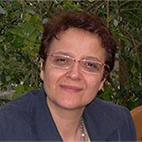Remote Sensing of Agricultural Greenhouses and Plastic-Mulched Farmland
A special issue of Remote Sensing (ISSN 2072-4292). This special issue belongs to the section "Remote Sensing in Agriculture and Vegetation".
Deadline for manuscript submissions: closed (30 June 2021) | Viewed by 16121
Special Issue Editors
Interests: remote sensing; optical satellite imagery; greenhouse mapping; DSM extraction from satellite imagery; greenhouse crops monitoring; OBIA
Interests: remote sensing; satellite imagery; OBIA; DEM quality; greenhouse mapping; greenhouse crop monitoring; forests
Special Issues, Collections and Topics in MDPI journals
Interests: remote sensing; GIS; object extraction; digital image processing; urban planning
Interests: modeling of earth structures by wide-angle seismic profiling and surface wave dispersion; forward and inverse modeling; elastic, anelastic, and anisotropic media; near-surface seismic velocity modelling; seismic tomography; risk seismic; tsunami; seismic hazard; seismic vulnerability
Interests: geomatics; optical remote sensing; pixel-based and geographic object-based image analysis (GEOBIA); UAV applications; digital photogrammetry and spatial analysis; methodologies for multi-temporal analysis (change detection) and classification of optical satellite sensor data aimed at environmental, agricultural and cultural heritage monitoring and documentation
Special Issues, Collections and Topics in MDPI journals
Special Issue Information
Dear colleagues,
The use of plastic materials in agriculture during the past 70 years as a tool to move up the first harvest and increase crops’ yield, both those of fruits and vegetables, has been steadily increasing throughout the world. According to reports, the total area of agriculture plastic film has been expanded at an average rate of 20% per year globally over the last decade, being widely used for covering greenhouses, medium or low tunnels, and for mulching. In this way, plastic covered greenhouses have reached a total coverage of 3019 x 103 hectares over the world, mainly localized in China (91.4%), Korea (1.9%), Spain (1.7%), Japan (1.6%), Turkey (1.1%), and Italy (0.9%). In the same way, China also has the largest area of plastic-mulched farmland in the world, and that area has been growing more and more rapidly.
This expansive use of plastic film in agriculture is provoking important environmental and management problems. In this sense, accurate spatiotemporal mapping of plastic film (greenhouses and plastic-mulched farmland LULC) and monitoring of greenhouse crops (crop identification, phenological status, water needs, etc.) would be helpful for both farmers and decision and policy makers. Thus, an increasing amount of scientific literature has been published during the last decade focused on agricultural plastic covered areas using remote sensing.
This Special Issue will report the latest advances and trends in the field of remote sensing for mapping agricultural greenhouses and plastic-mulched farmland, addressing both original developments, new applications, and practical solutions to open questions. Topics for this Special Issue include but are not limited to the following:
- Application of radar and/or optical satellite sensors, from very high to medium spatial resolution, for mapping greenhouses and plastic-mulched farmland;
- Identification of crops that are growing under plastic coverings;
- Integration of multi-temporal multisensor satellite imagery;
- Spectral metrics specially developed for the detection of plastic covers;
- Object-based image analysis (OBIA) applied to mapping greenhouses and plastic-mulched farmland: Segmentation and classification;
- Generation and use of digital surface models for improving greenhouse 2D and 3D mapping;
- Fusion and integration of data and information from multiple sensors (spectral and hyperspectral data, LiDAR, SAR, inSAR) and platforms (UAV, satellite, aircraft, ground vehicles) for mapping and monitoring greenhouse crops;
- Machine learning and deep learning approaches for greenhouse mapping and greenhouse crops monitoring from remote-sensed data.
Papers must be original contributions, not previously published or submitted to other journals. Submissions based on previous published or submitted conference papers may be considered provided they are considerably improved and extended.
Dr. Manuel Ángel Aguilar
Dr. Fernando José Aguilar
Dr. Dilek Koc-San
Dr. Mimoun Chourak
Dr. Eufemia Tarantino
Dr. Abderrahim Nemmaoui
Guest Editors
Manuscript Submission Information
Manuscripts should be submitted online at www.mdpi.com by registering and logging in to this website. Once you are registered, click here to go to the submission form. Manuscripts can be submitted until the deadline. All submissions that pass pre-check are peer-reviewed. Accepted papers will be published continuously in the journal (as soon as accepted) and will be listed together on the special issue website. Research articles, review articles as well as short communications are invited. For planned papers, a title and short abstract (about 100 words) can be sent to the Editorial Office for announcement on this website.
Submitted manuscripts should not have been published previously, nor be under consideration for publication elsewhere (except conference proceedings papers). All manuscripts are thoroughly refereed through a single-blind peer-review process. A guide for authors and other relevant information for submission of manuscripts is available on the Instructions for Authors page. Remote Sensing is an international peer-reviewed open access semimonthly journal published by MDPI.
Please visit the Instructions for Authors page before submitting a manuscript. The Article Processing Charge (APC) for publication in this open access journal is 2700 CHF (Swiss Francs). Submitted papers should be well formatted and use good English. Authors may use MDPI's English editing service prior to publication or during author revisions.
Keywords
- remote sensing
- optical satellite imagery
- SAR satellite imagery
- greenhouse mapping
- greenhouse crops monitoring
- plastic mulch crops
- deep learning
- machine learning
- OBIA
- evapotranspiration of greenhouse crops








